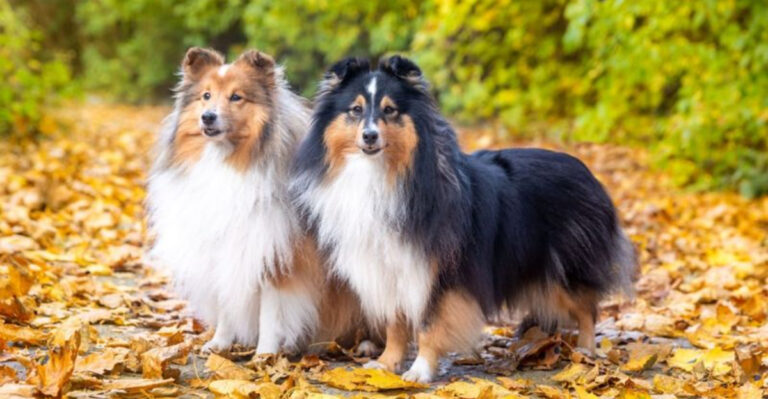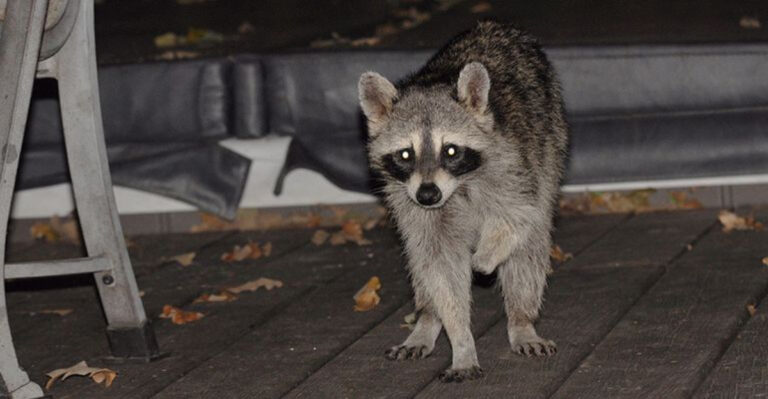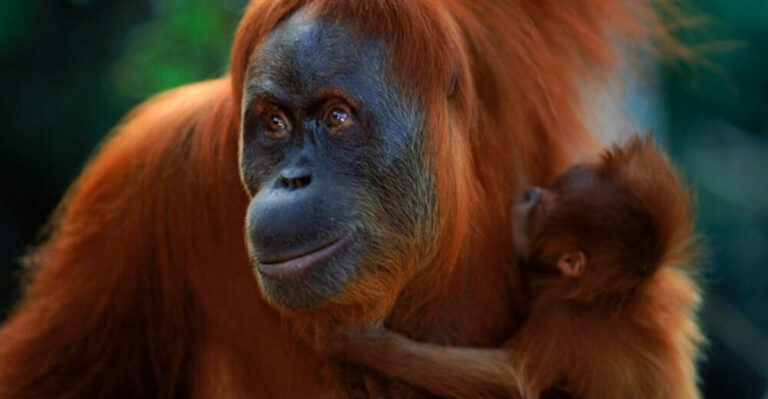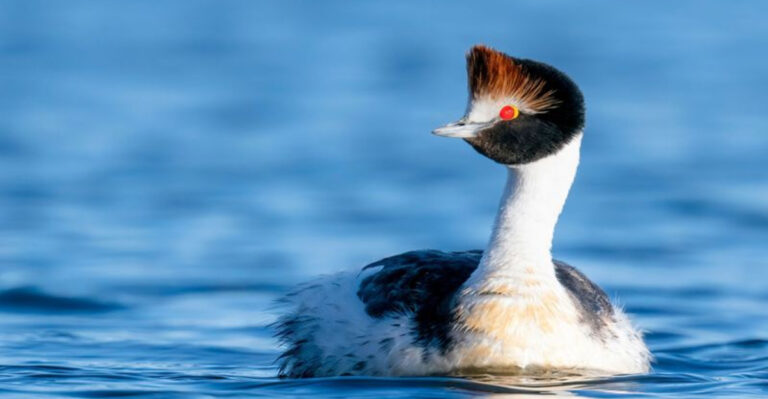38 Supersized Animals That Dominate The Earth Today
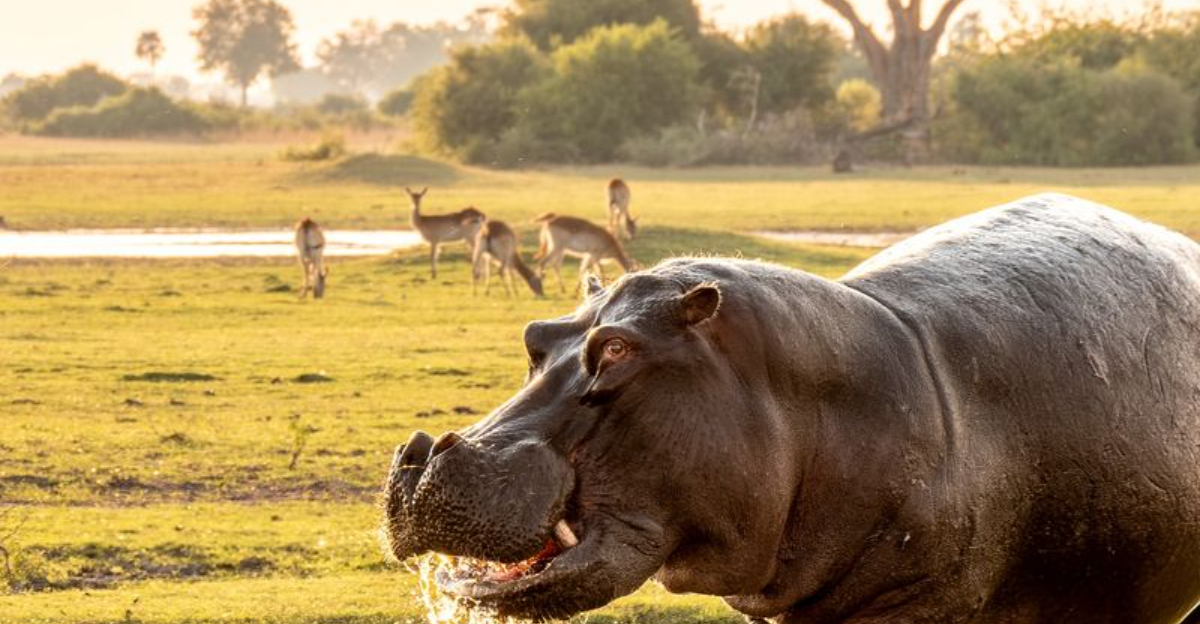
In the vast animal kingdom, size often correlates with strength, dominance, and survival.
From the oceans to the savannas, some creatures grow to enormous sizes, ruling their habitats with grace and power. Whether in the water, on land, or in the air, these supersized animals captivate our imagination and inspire awe.
1. Andean Condor
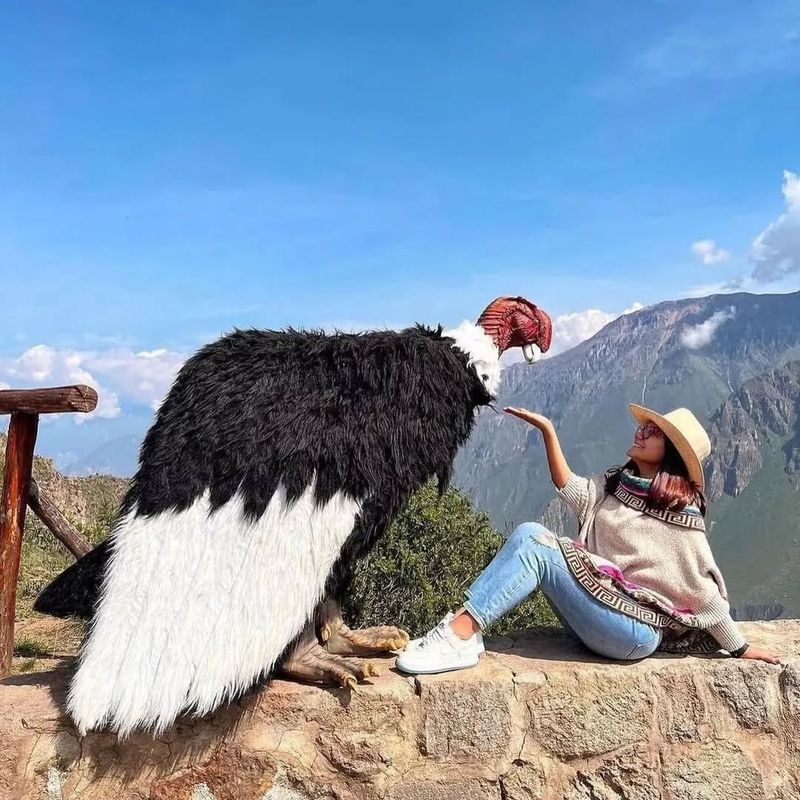
The Andean Condor is one of the largest flying birds in the world, with a wingspan that can reach up to 10 feet. Native to the mountainous regions of South America, this massive bird is an expert at soaring high above the Andes, using thermals to glide effortlessly for long distances in search of carrion.
Despite their size, Andean Condors are graceful fliers and play an important role in their ecosystem by helping to clean up dead animal matter.
2. Beluga Whale
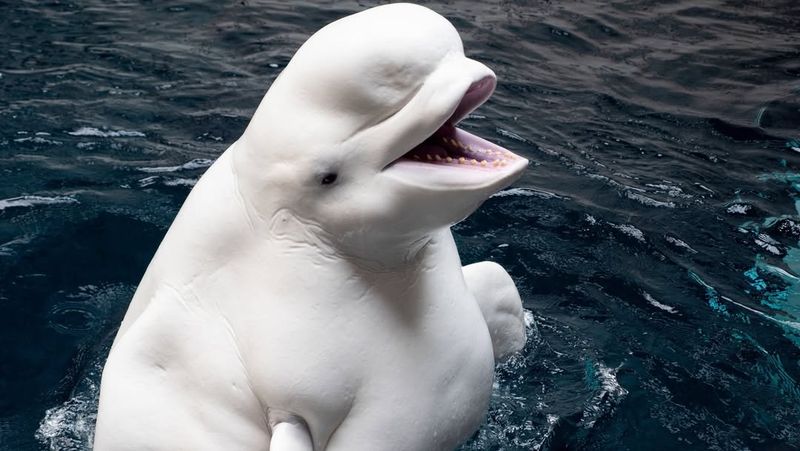
The Beluga Whale, known for its white skin and expressive face, is another impressive supersized animal. These social creatures are highly intelligent and communicate using a variety of sounds. They can live in cold Arctic waters, where they navigate through the ice and are known for their ability to adapt to extreme conditions, making them one of the most unique marine mammals.
3. African Elephant
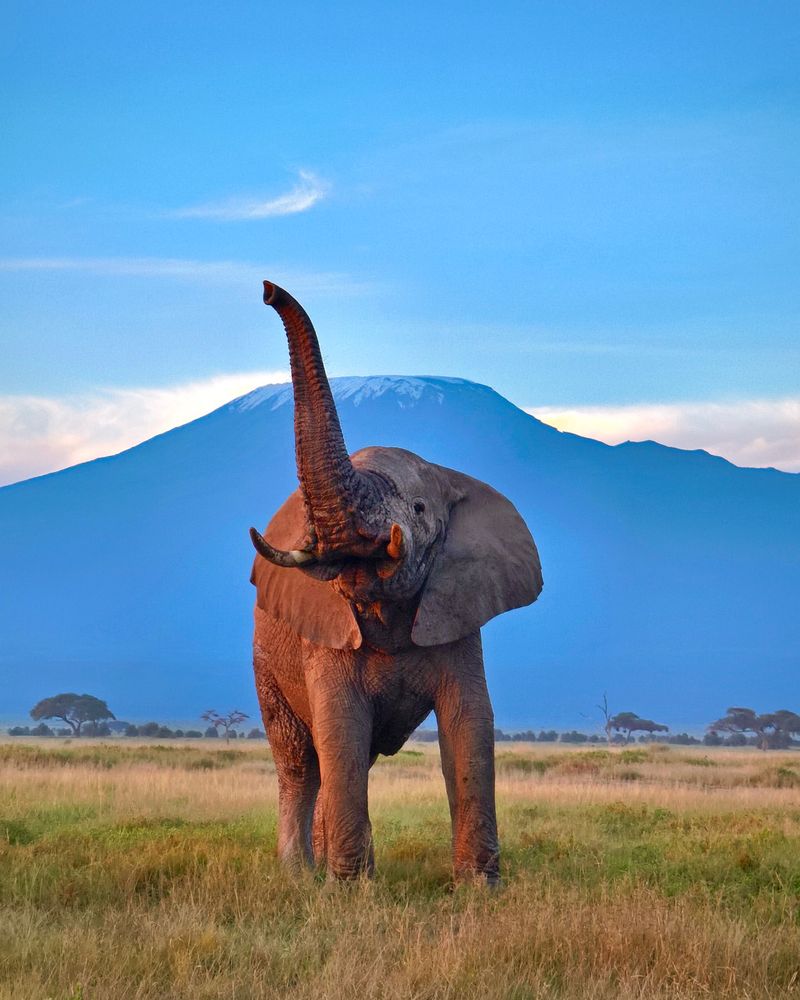
The African Elephant’s massive size and social nature make it one of the most fascinating animals in the wild.
Their long trunks and large ears help them adapt to the heat, and they play an essential role in maintaining their ecosystem by spreading seeds and creating water sources for other species.
4. Blue Whale
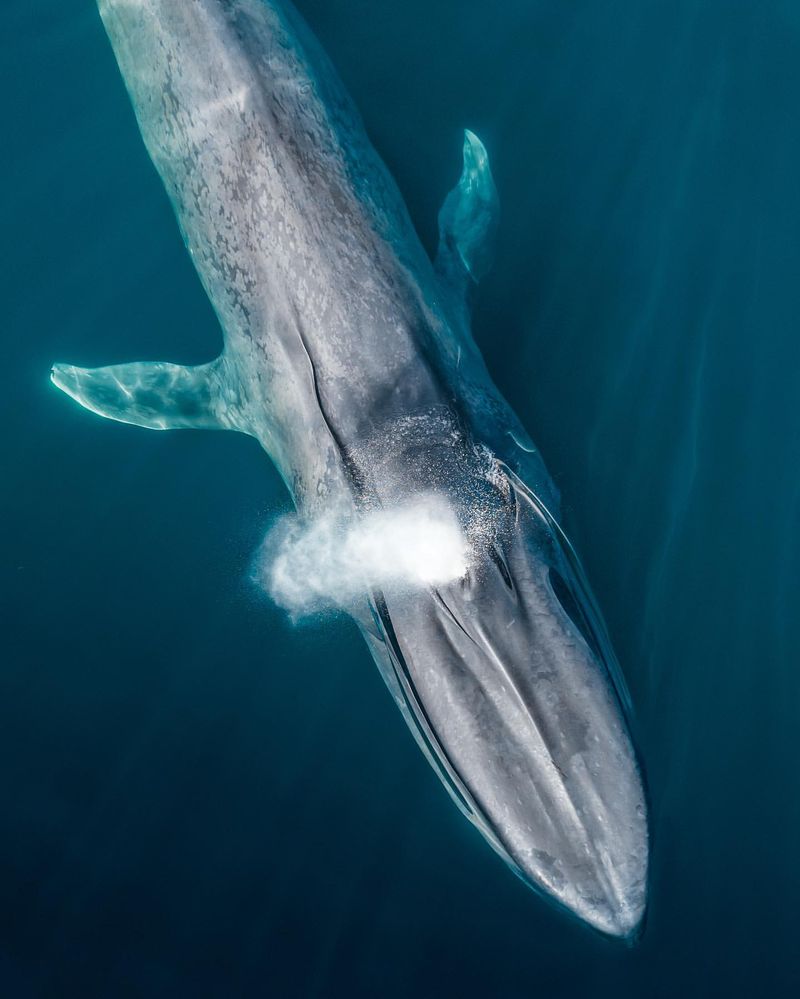
As the largest animal on Earth, the Blue Whale’s sheer size is awe-inspiring.
These majestic creatures travel the oceans, feeding on krill and communicating with low-frequency sounds that can travel for miles. Despite their size, they face numerous threats from pollution and ship traffic.
5. Giraffe
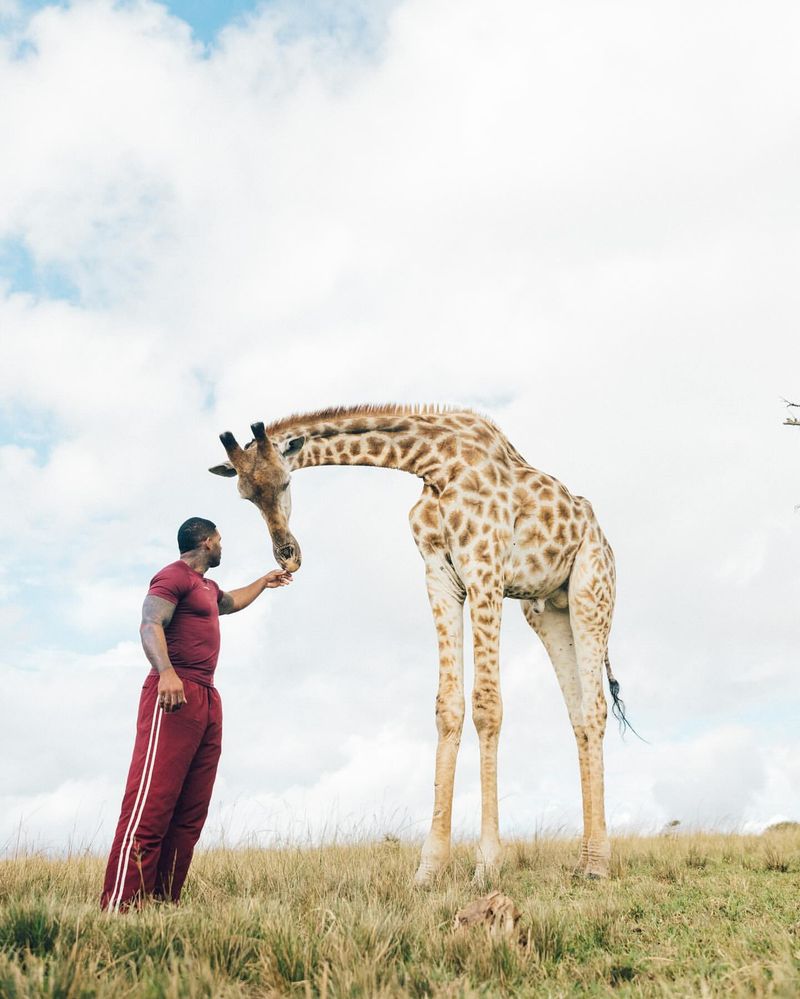
With their towering necks and elegant stride, giraffes are easily recognized in the African savannah. They use their height to feed on treetops, reaching leaves that few other herbivores can access.
Their social structure is fluid, and they rely on each other for protection from predators.
6. Polar Bear
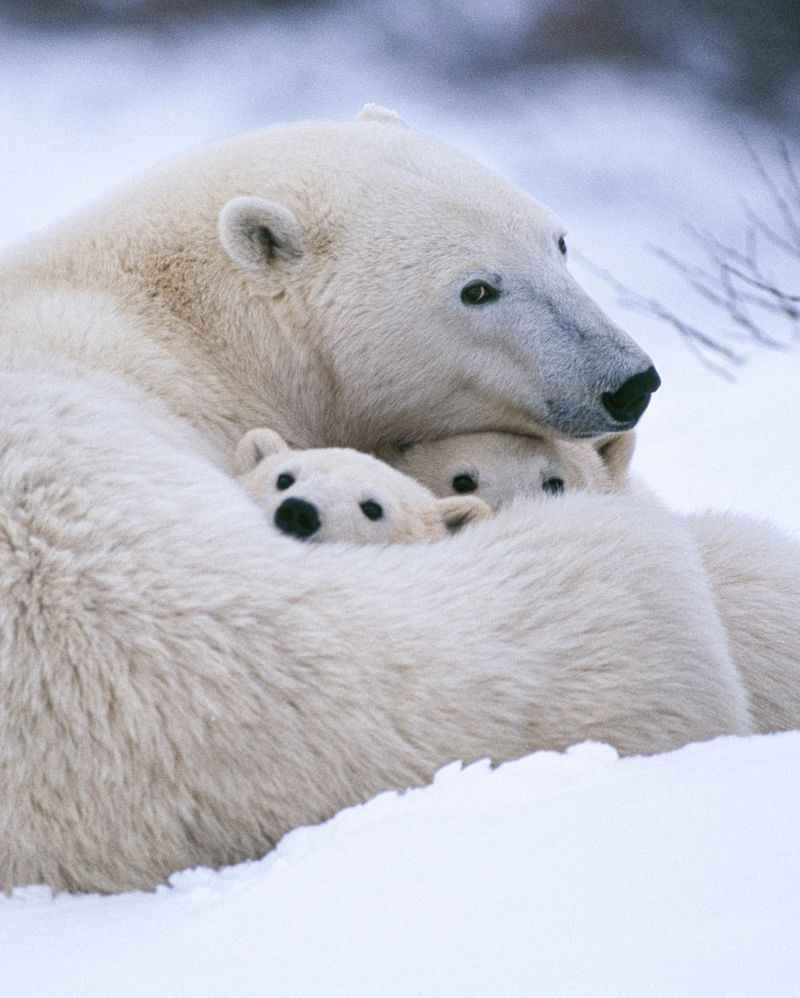
The Polar Bear is uniquely adapted to its harsh Arctic environment, with thick fur and a fat layer that keeps it warm.
As one of the largest land carnivores, it spends most of its life on the ice, hunting seals and swimming in icy waters, though its survival is increasingly threatened by climate change.
7. Saltwater Crocodile
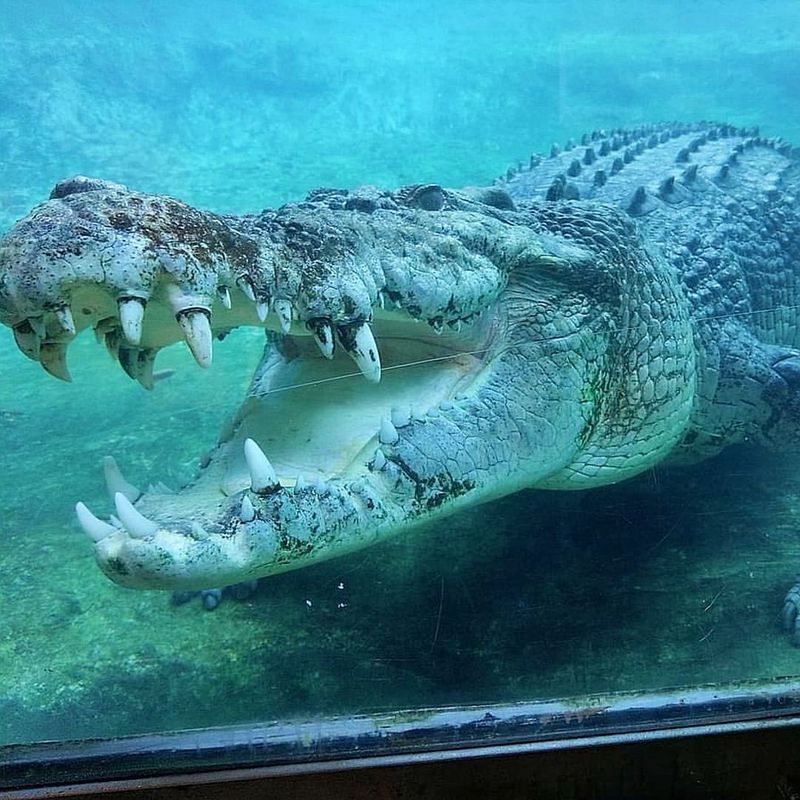
The Saltwater Crocodile is a master of ambush, lurking beneath the water’s surface to hunt unsuspecting prey.
As the largest living reptile, it commands respect with its sheer power and aggressive nature. Saltwater crocodiles can travel vast distances across the ocean, making them one of the most versatile predators.
8. Hippopotamus
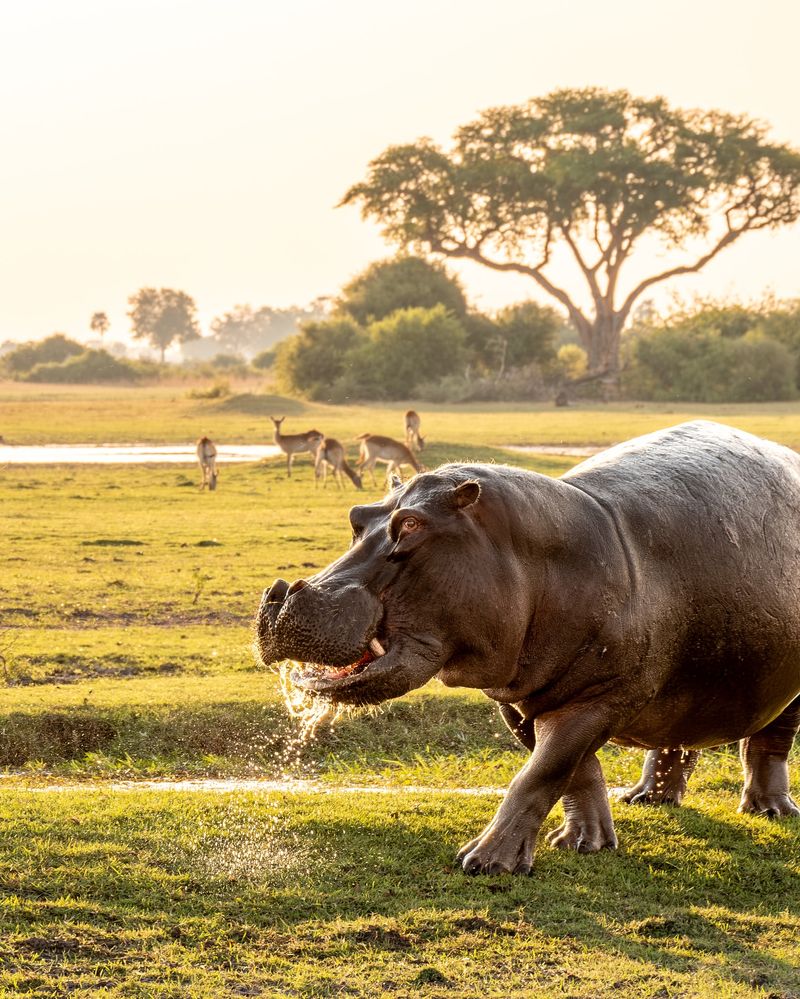
Despite their seemingly docile appearance, Hippopotamuses are among the most dangerous animals in Africa. With powerful jaws and aggressive behavior, they protect their territory fiercely.
They spend most of their time in the water but venture onto land to graze at night.
9. Komodo Dragon
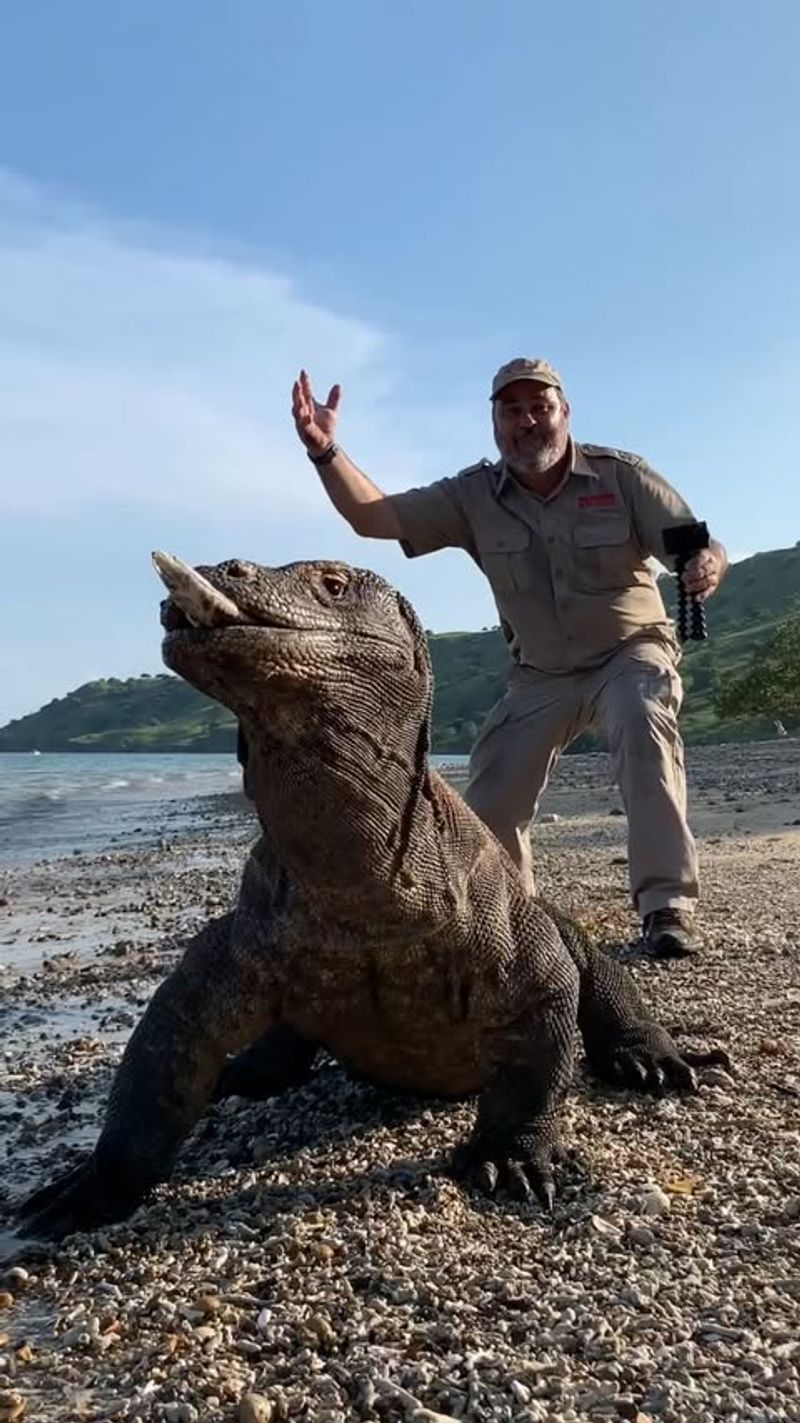
The Komodo Dragon’s intimidating size and hunting prowess make it the apex predator of the islands it inhabits.
These large lizards use their venomous bites to immobilize prey, and despite their slow movements, they are highly effective hunters in their native environment.
10. Anaconda

The Anaconda is a massive snake that can constrict its prey with immense strength, suffocating it before swallowing it whole.
Found in the swamps and rivers of South America, these powerful reptiles are excellent swimmers and can grow to over 30 feet in length.
11. Moose
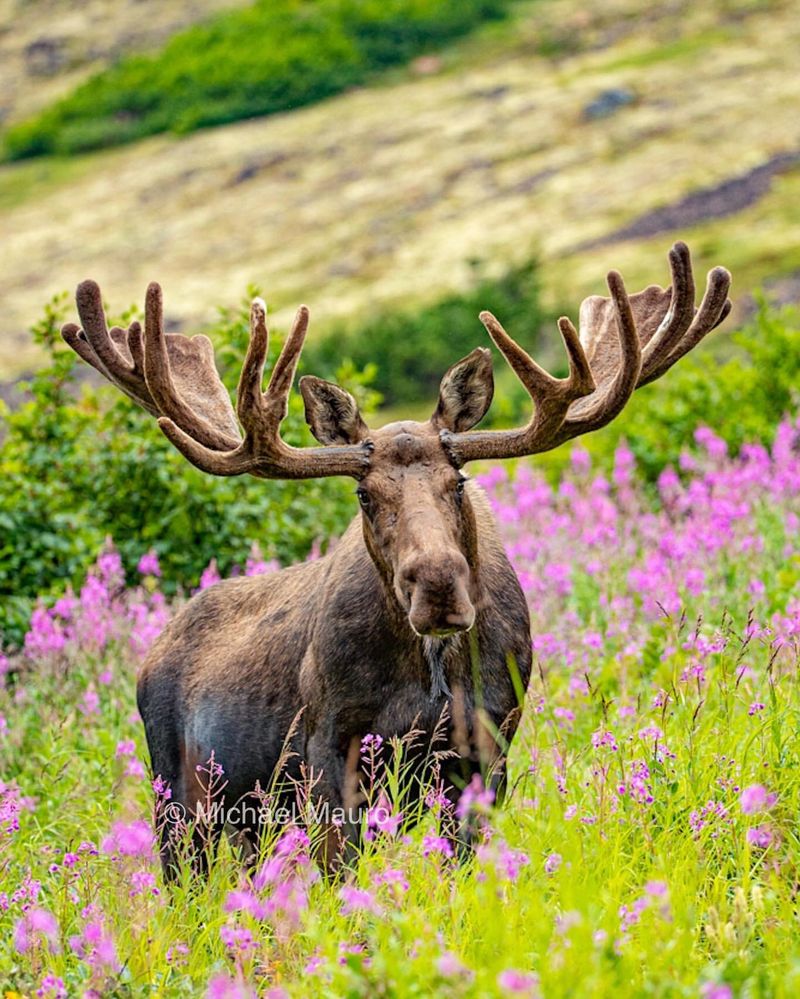
With their large size and powerful build, moose are the largest members of the deer family. They are primarily herbivores, feeding on leaves, twigs, and aquatic plants.
Moose are solitary animals but can become aggressive if threatened, especially during mating season.
12. Giant Pacific Octopus
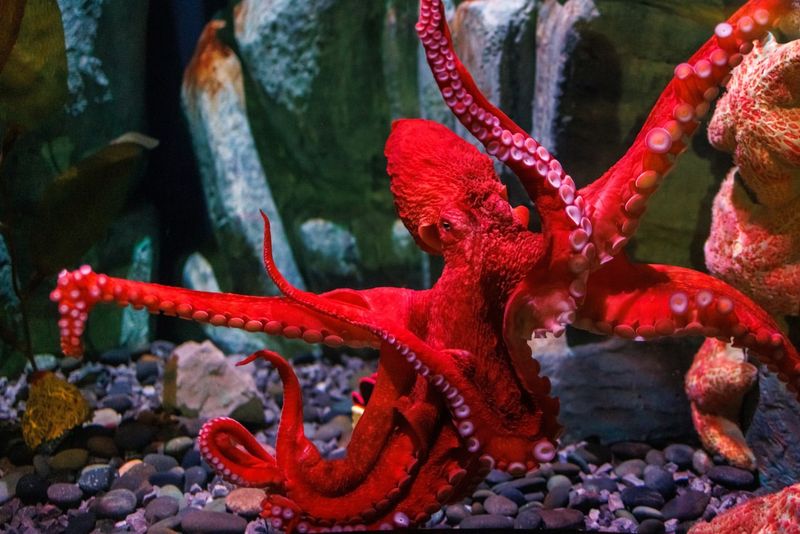
The Giant Pacific Octopus is an incredibly intelligent creature known for its ability to solve problems and camouflage with ease.
These deep-sea dwellers can grow up to 16 feet across their arms and are excellent hunters, using their flexible bodies to navigate complex underwater environments.
13. Grizzly Bear
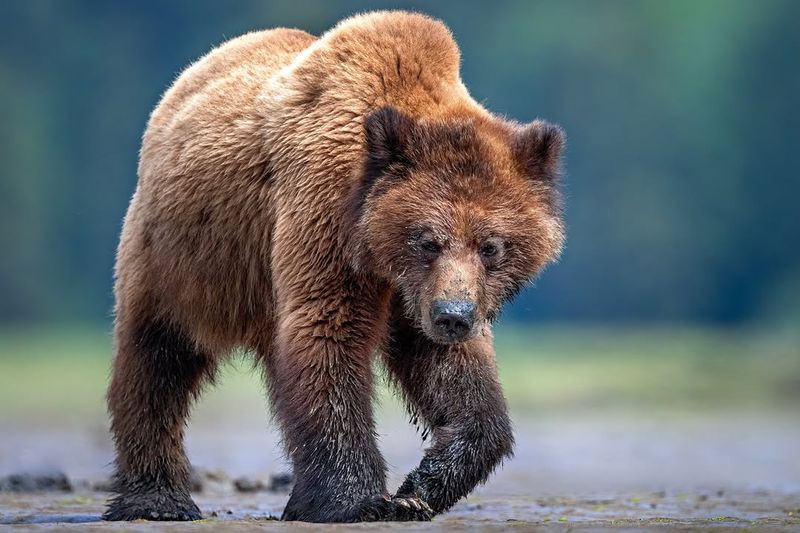
Grizzly Bears are known for their immense strength and fearlessness. These apex predators use their claws and powerful jaws to catch fish, hunt other mammals, and defend their territory.
Grizzlies are also highly protective parents, often seen guiding their cubs through dangerous environments.
14. Leatherback Sea Turtle
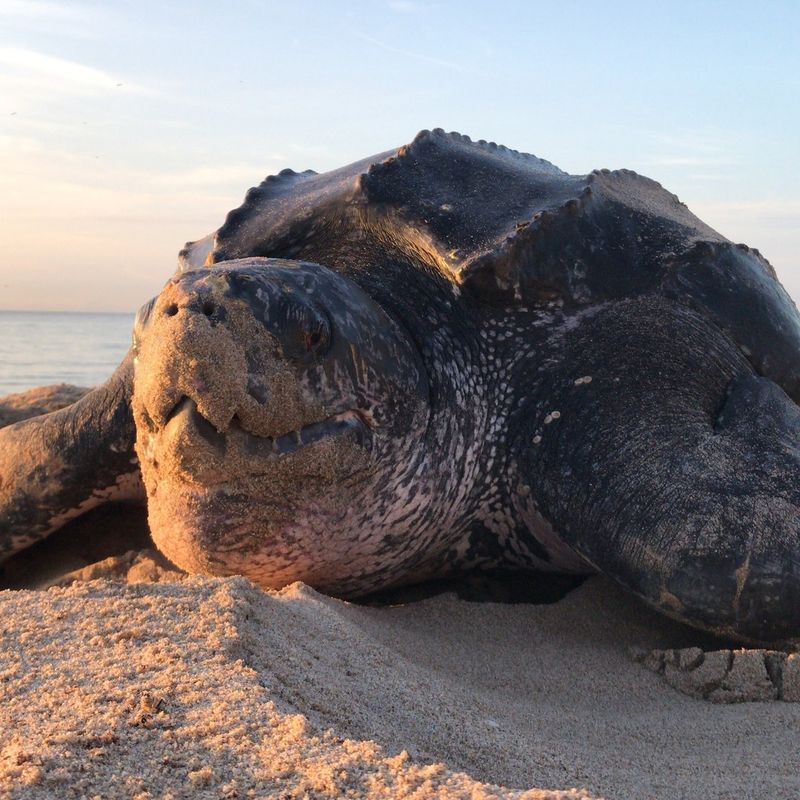
The Leatherback Sea Turtle is the largest of all sea turtles and the only one with a flexible, leathery shell.
These turtles are deep divers, traveling vast distances to feed on jellyfish and other marine life. Despite their size, they face threats from entanglement in fishing gear and ocean pollution.
15. Bison
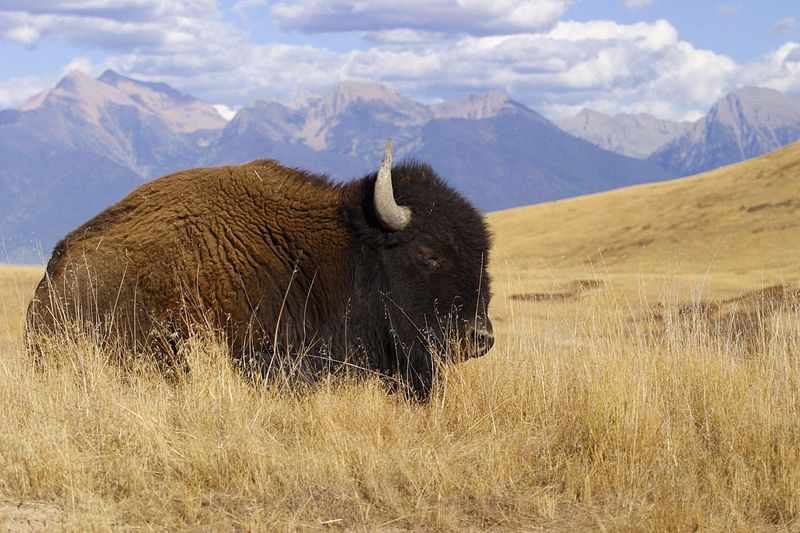
Bison are a symbol of the American plains, with their massive bodies and distinctive shaggy fur.
Once close to extinction, these powerful grazers have been successfully reintroduced to the wild, where they play a crucial role in maintaining the health of the grasslands by controlling vegetation.
16. Emperor Penguin
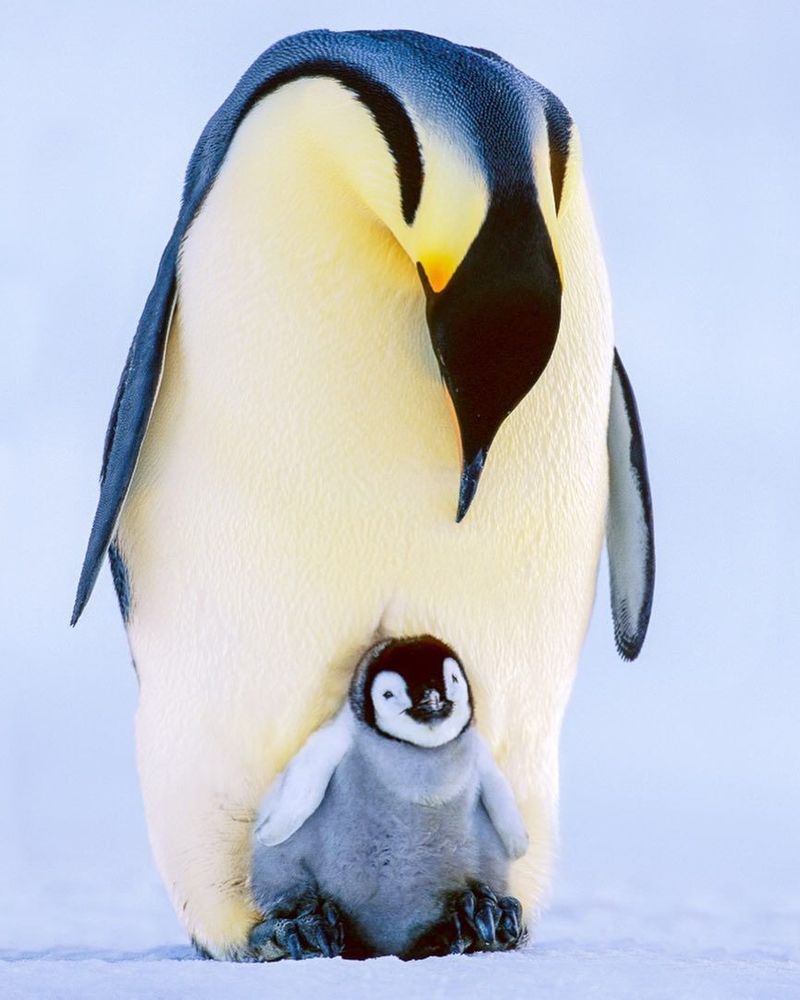
The Emperor Penguin is the largest of its species and is uniquely adapted to survive the extreme cold of Antarctica.
With their thick feathers and ability to huddle for warmth, these penguins endure harsh conditions to breed and raise their young during the winter months.
17. Goliath Beetle
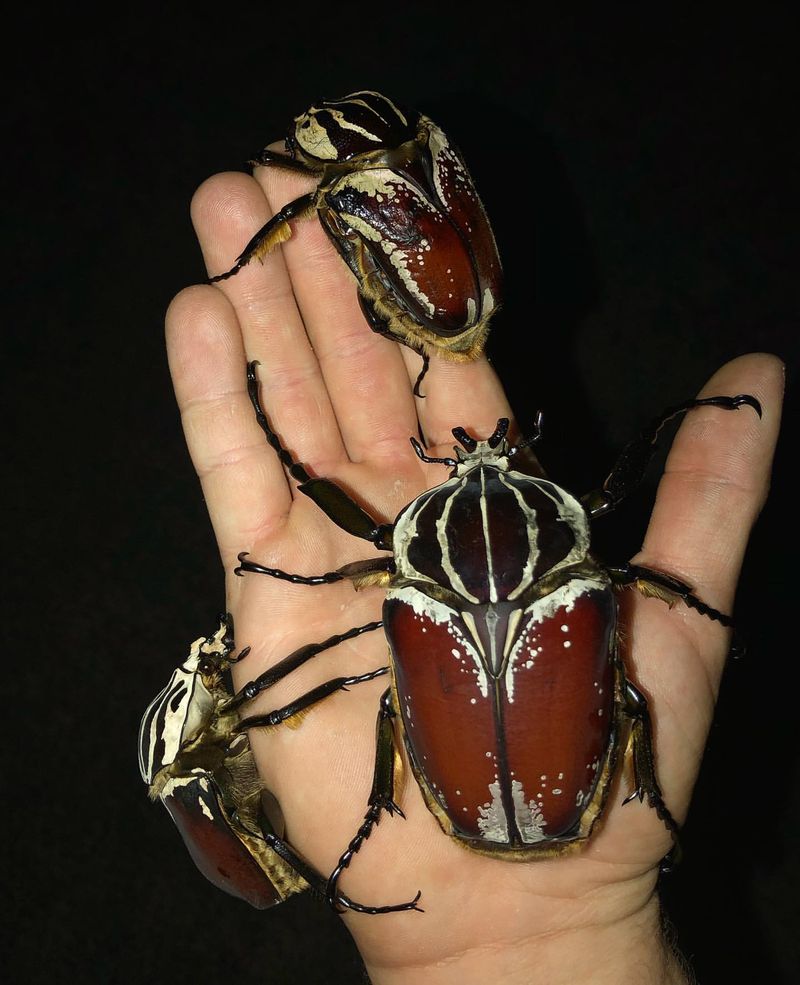
The Goliath Beetle is one of the heaviest insects on the planet, weighing up to 3.5 ounces. Found in tropical Africa, these beetles are known for their impressive size and striking appearance.
They have powerful legs and are capable of flying short distances.
18. Giant Clam
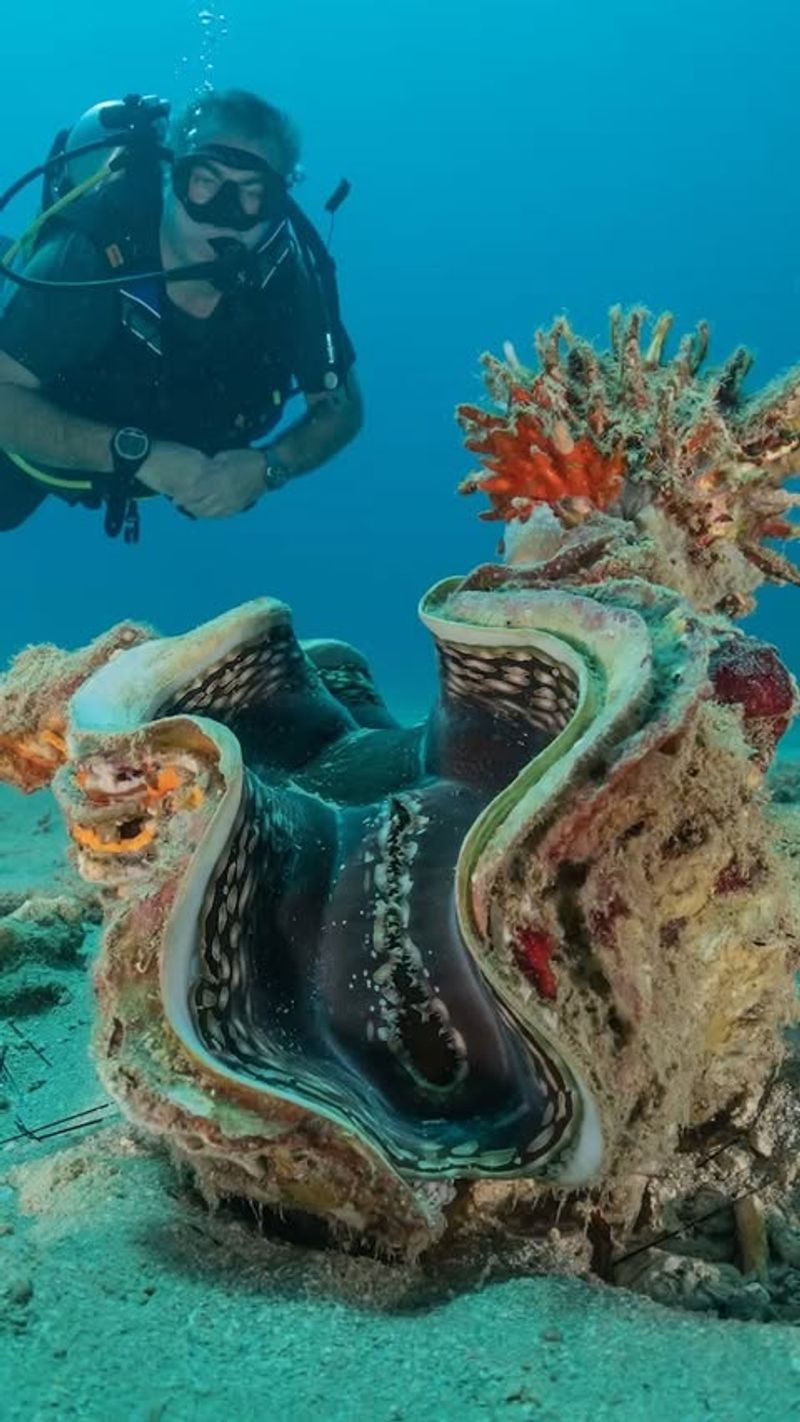
The Giant Clam is the largest bivalve mollusk, capable of growing up to 4 feet in length.
Found in the warm waters of the Pacific and Indian Oceans, these enormous clams filter plankton from the water, providing valuable ecosystem services in coral reef habitats.
19. King Cobra
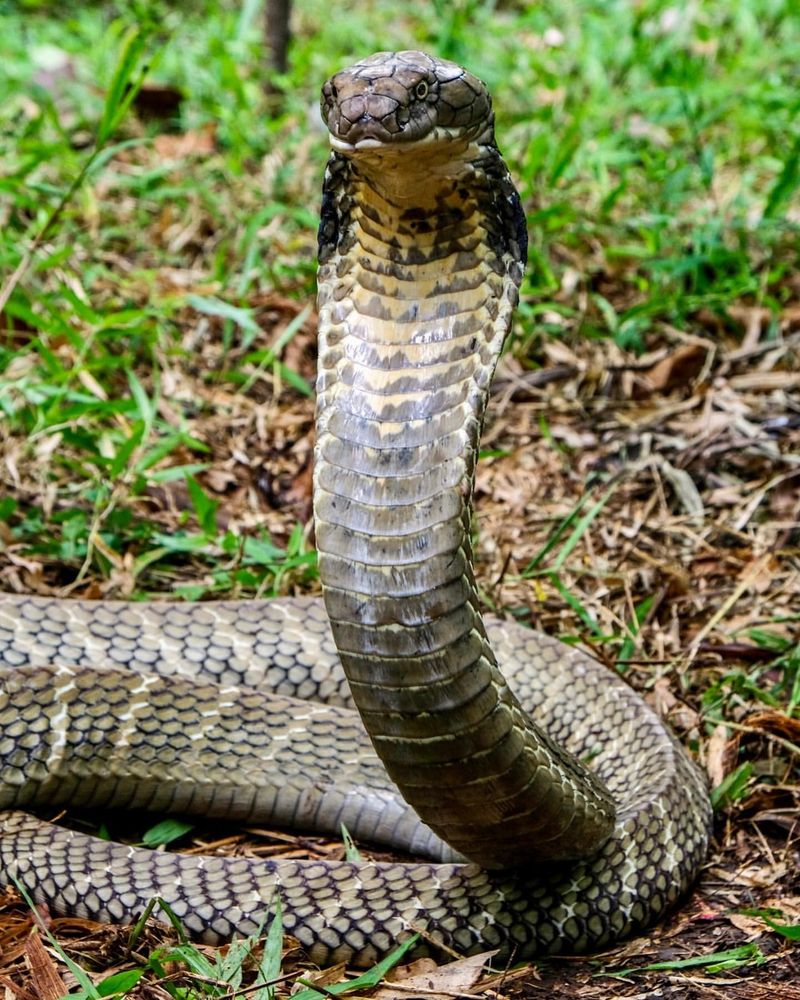
The King Cobra is the longest venomous snake in the world, capable of reaching lengths of up to 18 feet. Native to Southeast Asia, it is known for its potent venom, which can kill prey in just a few hours.
Despite its fearsome reputation, the King Cobra is highly intelligent and can recognize its surroundings.
20. Gaur
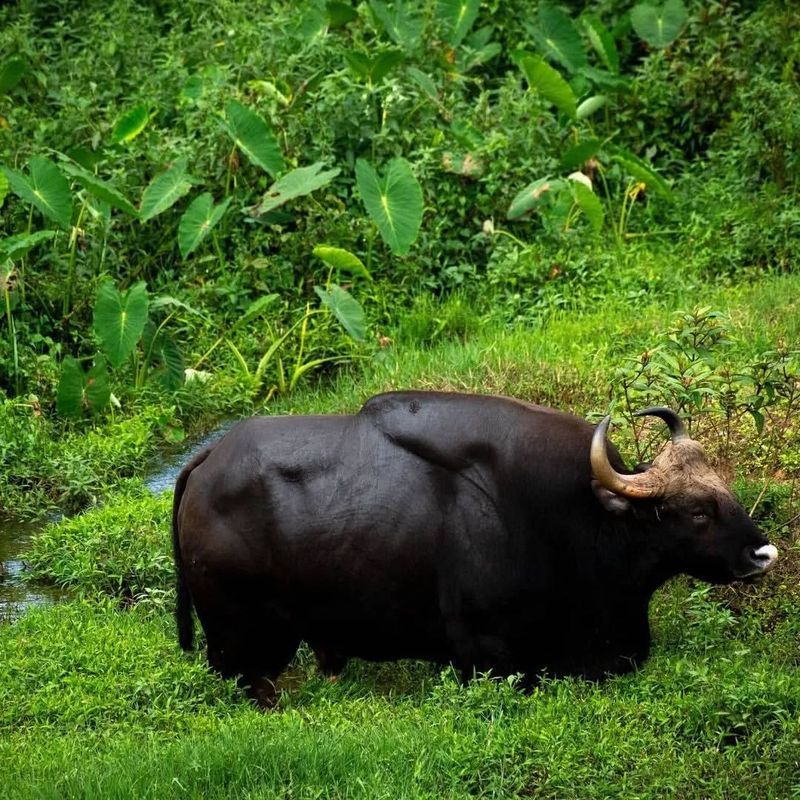
The Gaur, or Indian bison, is the largest wild cattle species in the world, with males weighing over 2,000 pounds.
Found in South and Southeast Asia, these powerful herbivores live in dense forests and are known for their strength, which they use to defend their herds from predators.
21. Orca

Orcas, or killer whales, are apex predators in the ocean, capable of hunting in groups to bring down large marine mammals like seals, whales, and even sharks.
They are highly social animals, living in pods with complex social structures and communication methods.
22. Ostrich
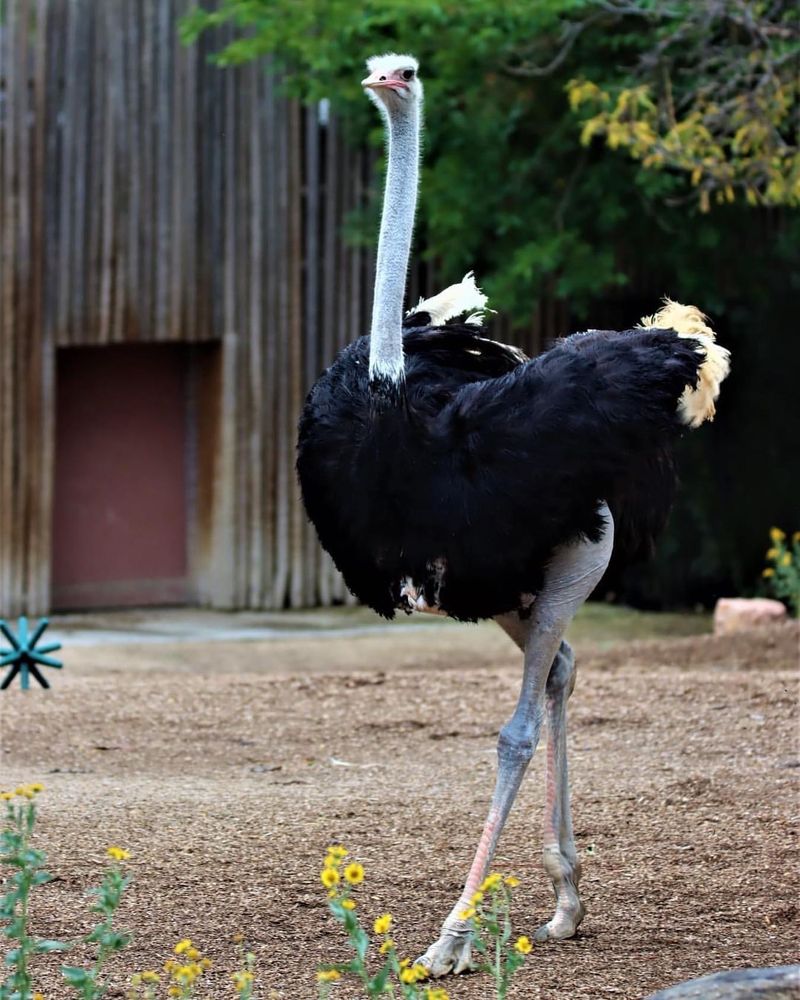
The Ostrich is the largest bird in the world, standing up to 9 feet tall and weighing over 300 pounds.
Native to Africa, these flightless birds are known for their powerful legs, capable of running at speeds up to 45 miles per hour. Their long necks and keen eyesight help them spot predators from a distance.
23. Cassowary
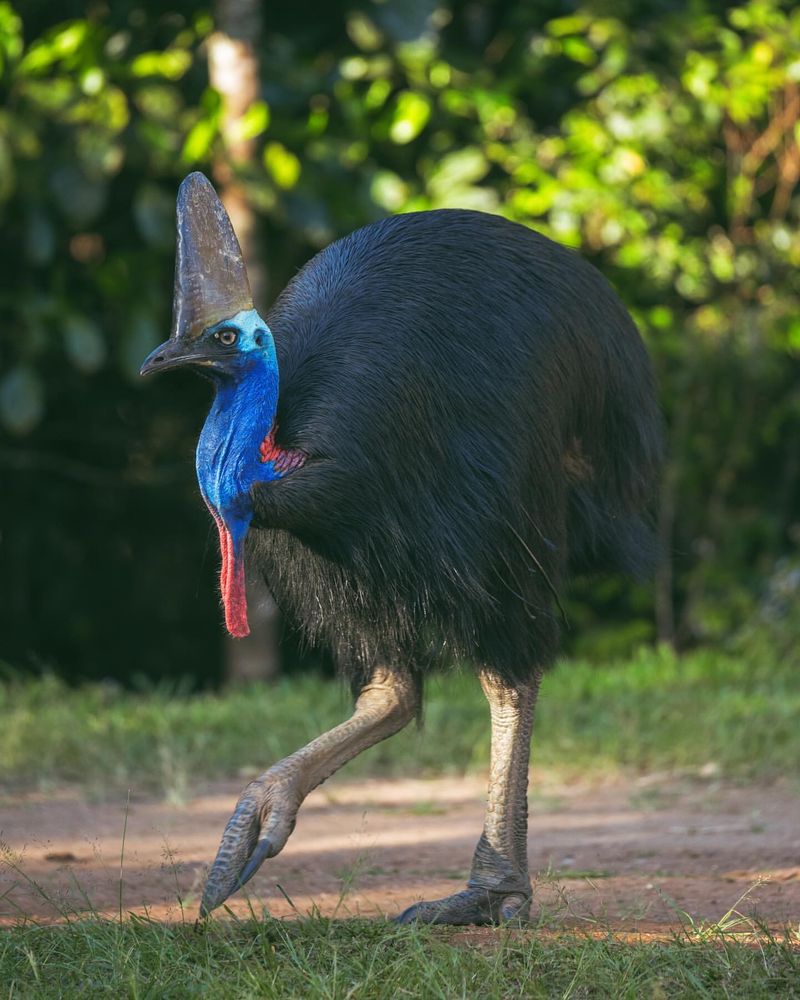
The Cassowary is one of the most dangerous birds, known for its sharp claws and aggressive behavior.
Native to the rainforests of New Guinea and northern Australia, the cassowary can grow up to 6 feet tall and has a bony casque on its head, which it uses to navigate through dense vegetation.
24. Sperm Whale
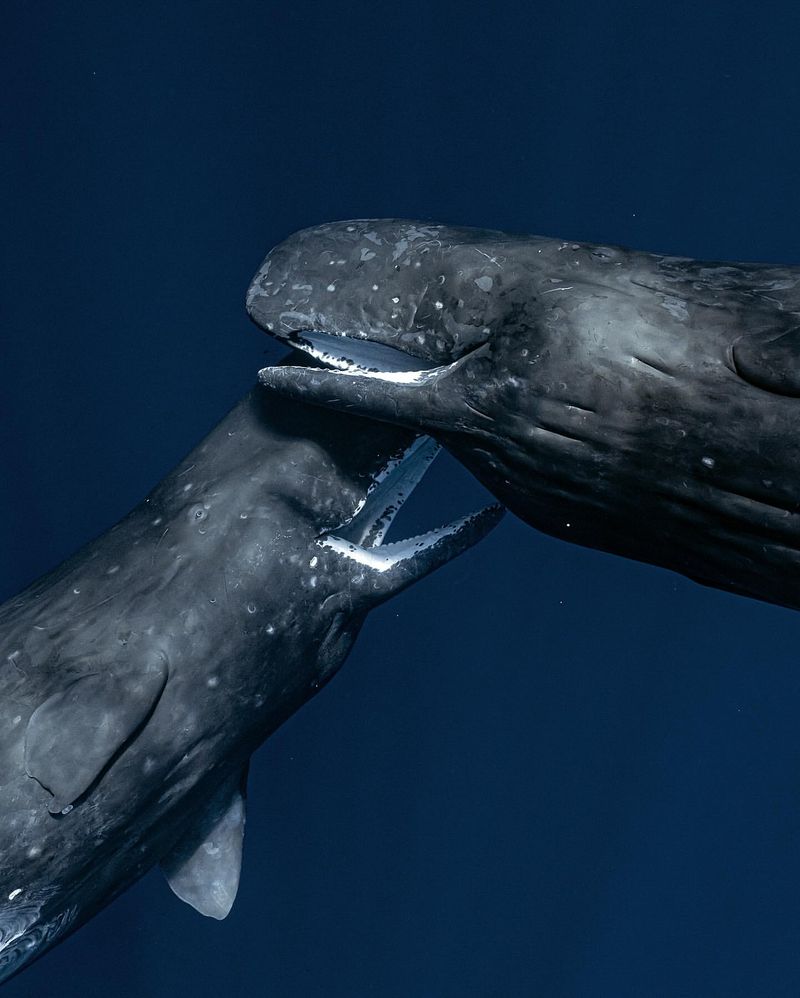
The Sperm Whale is the largest toothed whale, reaching lengths of up to 60 feet. These deep-diving giants are capable of plunging to depths of over 10,000 feet in search of squid, their primary food source.
Their massive heads contain a substance called spermaceti, which is believed to aid in echolocation and buoyancy.
25. Great White Shark
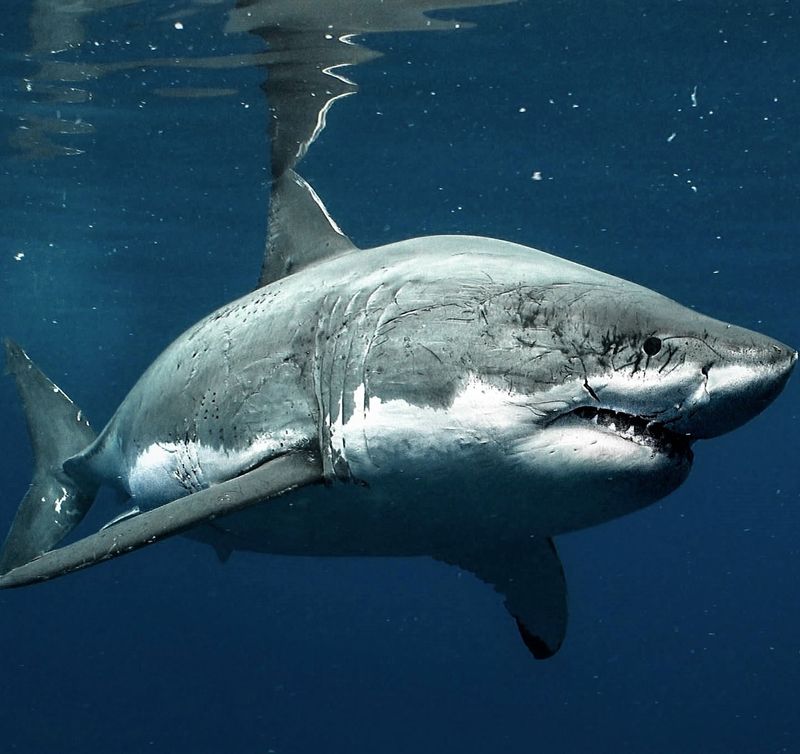
The Great White Shark is one of the most feared predators in the ocean, known for its size, speed, and hunting efficiency.
These sharks can grow up to 20 feet in length and weigh over 5,000 pounds. They are apex predators, preying on marine mammals, fish, and sea turtles.
26. Elephant Seal
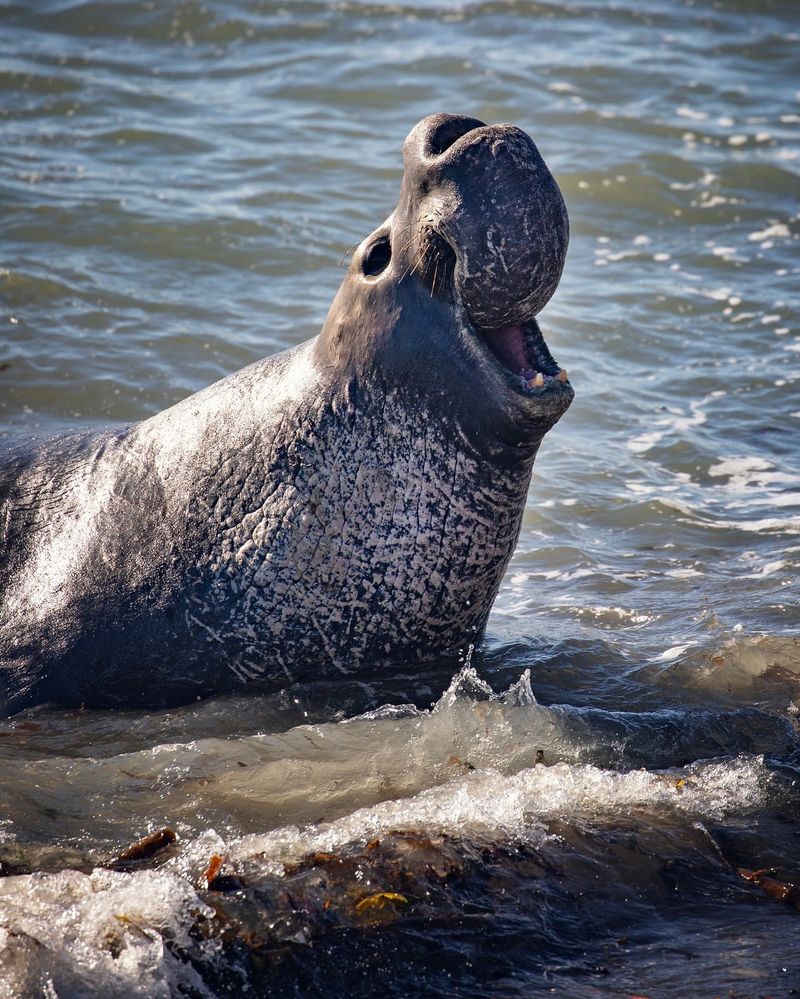
The Elephant Seal is the largest of the pinnipeds, with males growing up to 16 feet long and weighing over 5,000 pounds.
These seals are known for their dramatic size difference between males and females, and their loud, trumpeting calls are a signature of their breeding season.
27. African Buffalo
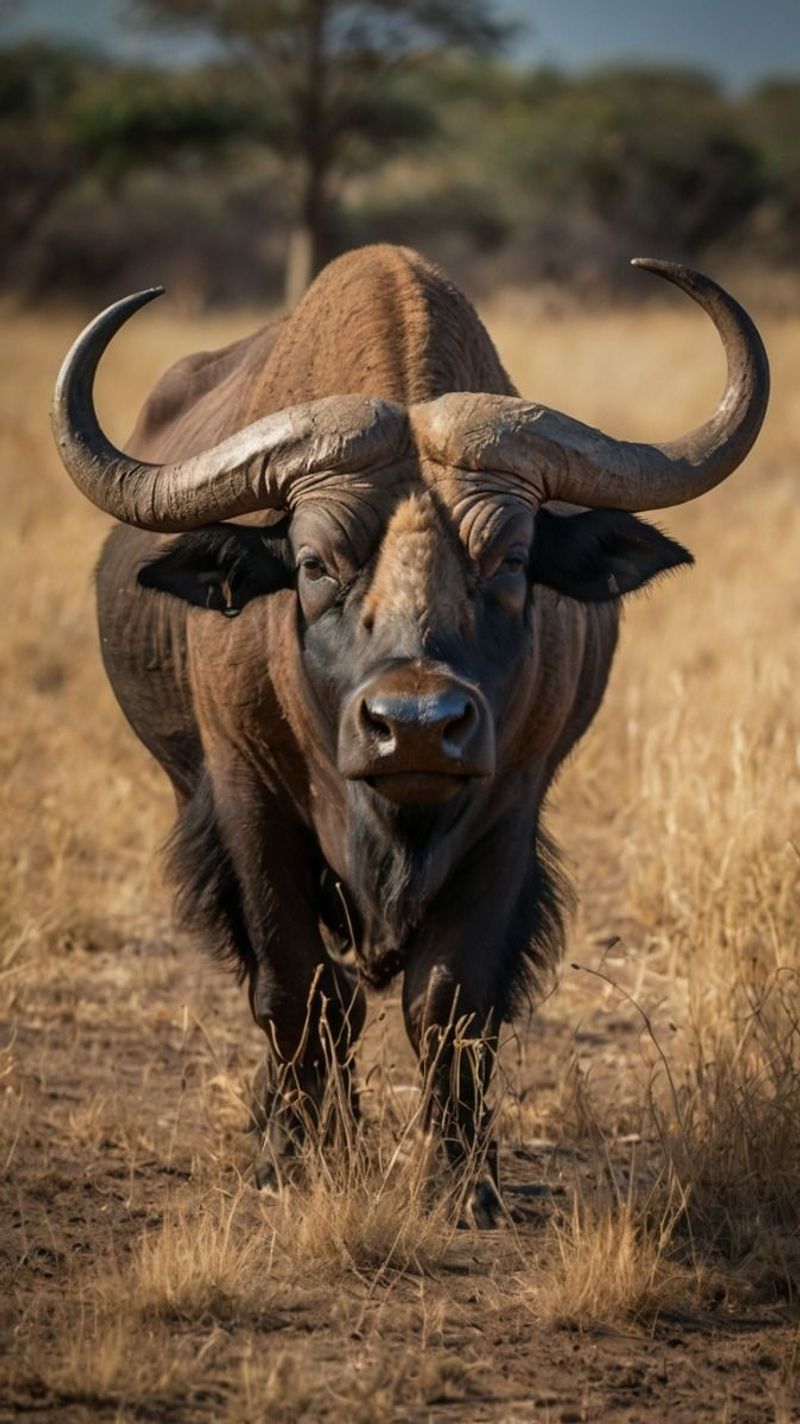
The African Buffalo is one of the most formidable herd animals in Africa, with powerful horns that can weigh up to 40 pounds.
Known for their strength and aggressive nature, African buffaloes can defend themselves against predators like lions and crocodiles, making them a respected and feared species.
28. Walrus
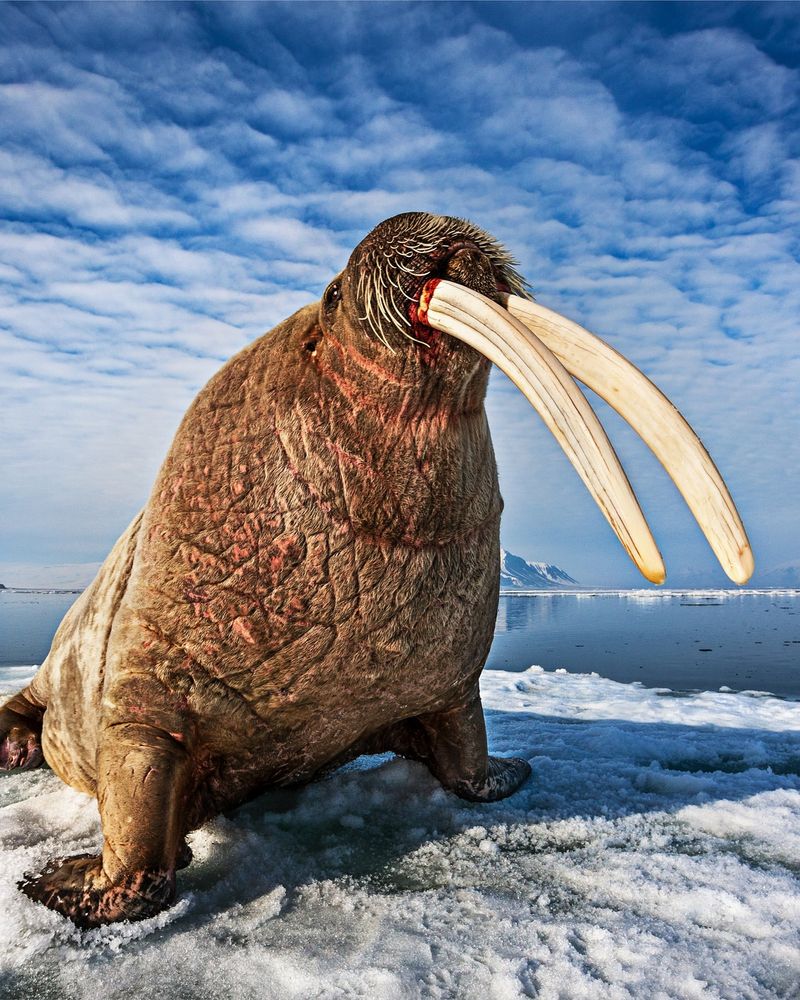
Walruses are massive marine mammals that can weigh over 3,700 pounds and are known for their distinctive tusks and large, blubbery bodies.
Found in the Arctic, they use their tusks to haul themselves out of the water and onto ice floes, where they rest and socialize in large groups.
29. Rhinoceros
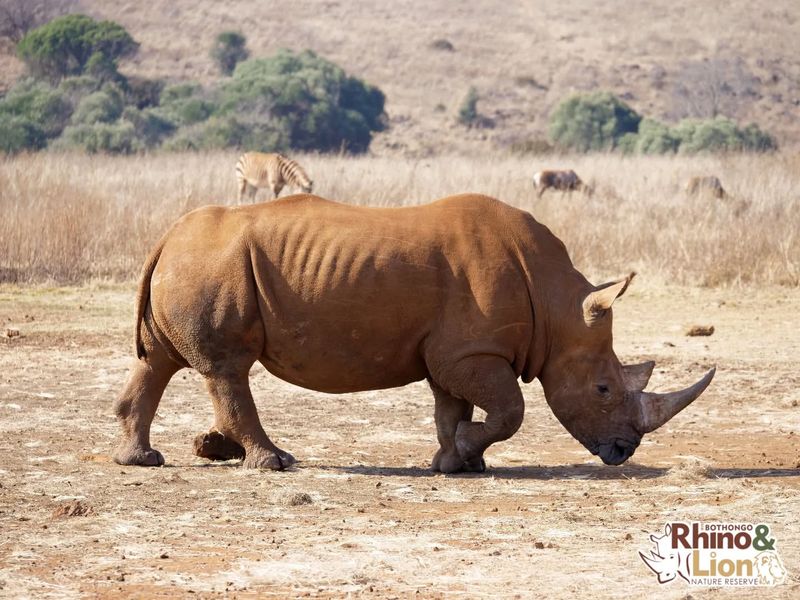
Rhinoceroses are large, thick-skinned herbivores found in Africa and Asia. Their horn, made of keratin, is highly prized, making them vulnerable to poaching.
Despite their size and strength, rhinos are gentle grazers, relying on their excellent sense of smell to navigate through the dense grasses and forests.
30. Asian Elephant
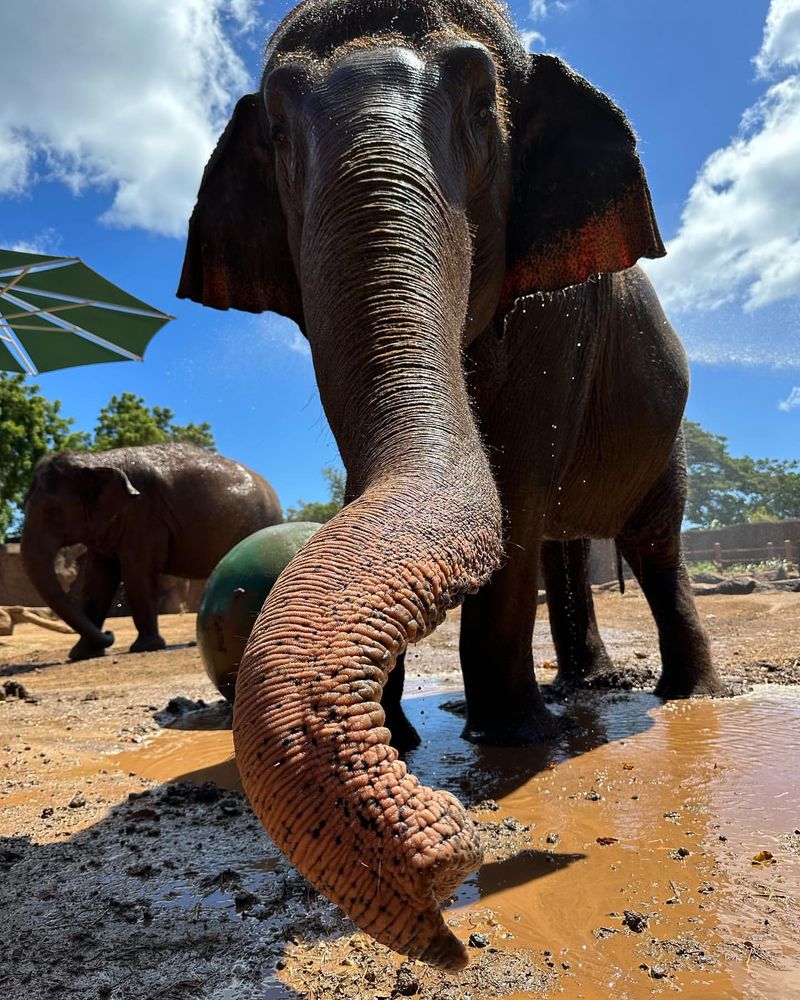
The Asian Elephant is a smaller relative of the African elephant but is no less remarkable. Found in Southeast Asia, these elephants are revered in many cultures and are used in traditional ceremonies.
Their smaller size and gentle nature make them well-suited for domestication and cultural significance.
31. Giant Anteater
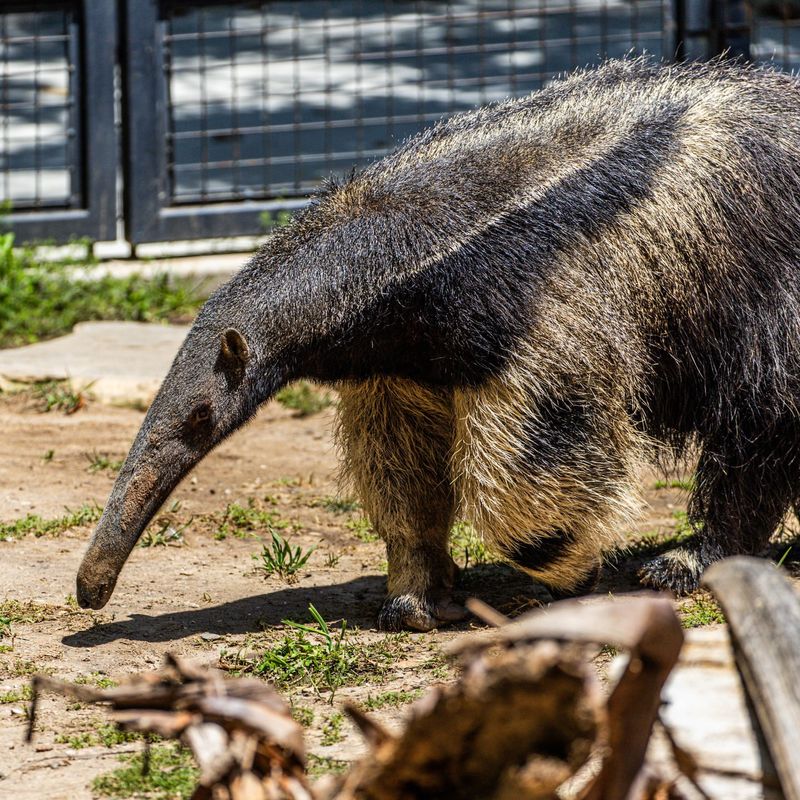
The Giant Anteater is a unique creature with a long, tube-like snout used to consume ants and termites.
Found in Central and South America, these anteaters have powerful claws that help them dig into mounds, and their thick fur protects them from their prey’s defenses. Despite their awkward appearance, they are excellent foragers.
32. Mountain Gorilla
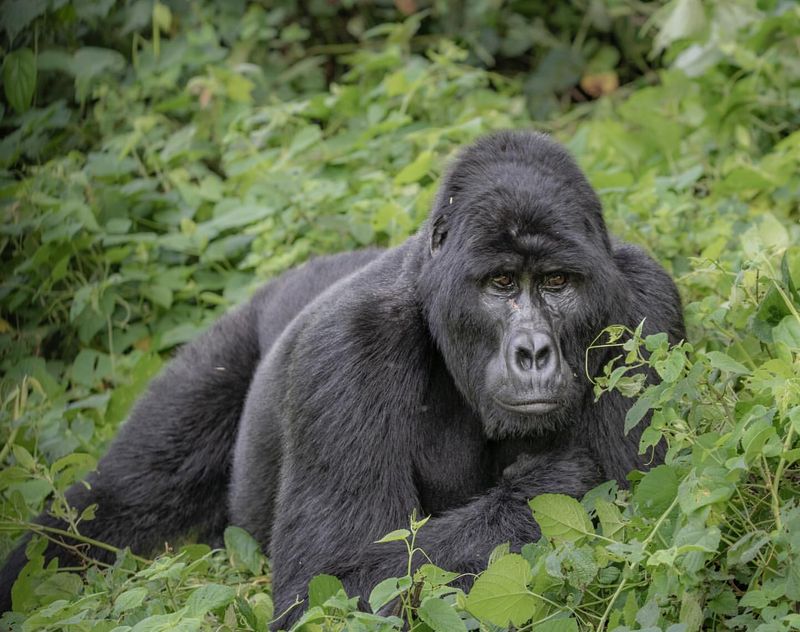
The Mountain Gorilla is one of the most critically endangered primates, living in the mountainous regions of Central Africa.
Known for their gentle nature and social groups led by dominant males, these gorillas are primarily herbivores and are closely related to humans, sharing over 98% of their DNA.
33. Giant Manta Ray
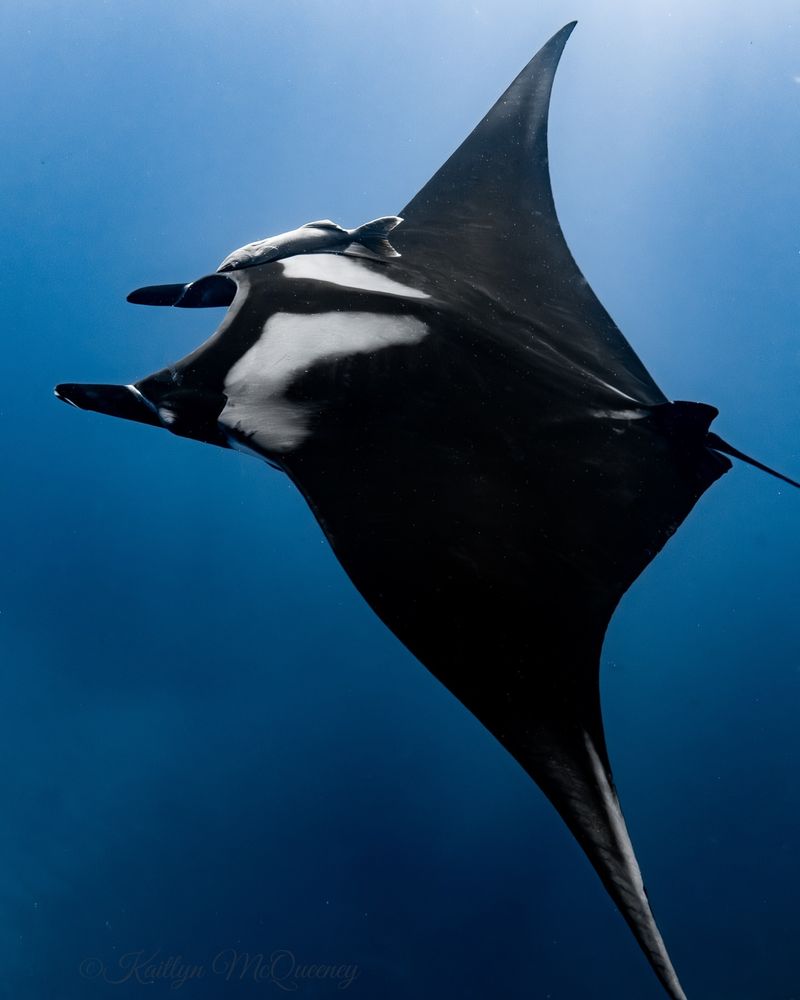
The Giant Manta Ray is one of the largest species of rays, with wingspans reaching up to 29 feet. These graceful creatures glide through the ocean, feeding on plankton and small fish.
Known for their intelligence, manta rays are often seen performing acrobatic jumps and flips out of the water.
34. Galápagos Tortoise
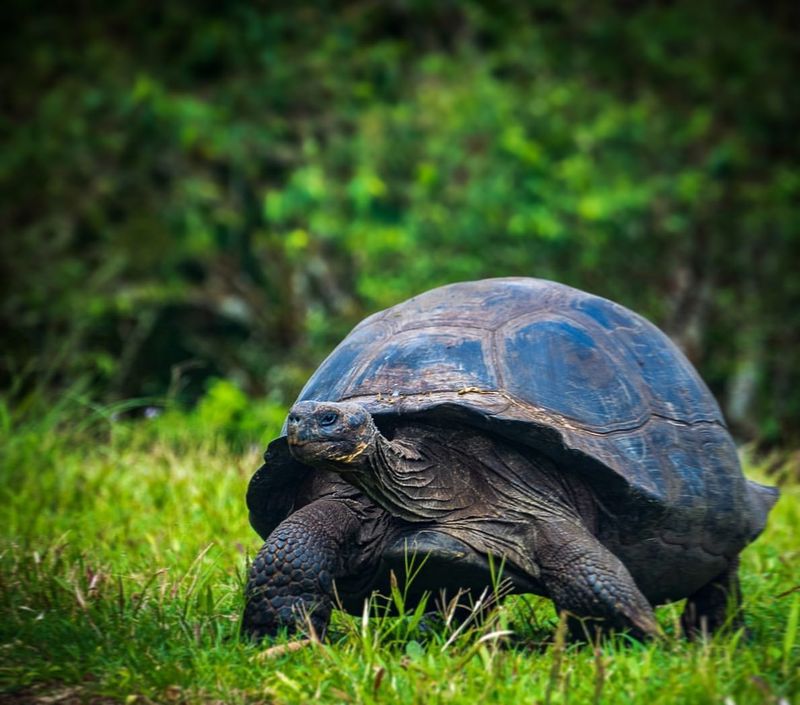
The Galápagos Tortoise is one of the largest tortoises, capable of reaching over 4 feet in length and weighing up to 500 pounds.
These ancient reptiles are famous for their slow pace and long lifespan, with some individuals living well over 100 years. They play a key role in shaping the islands’ ecosystems by spreading seeds.
35. Kodiak Bear
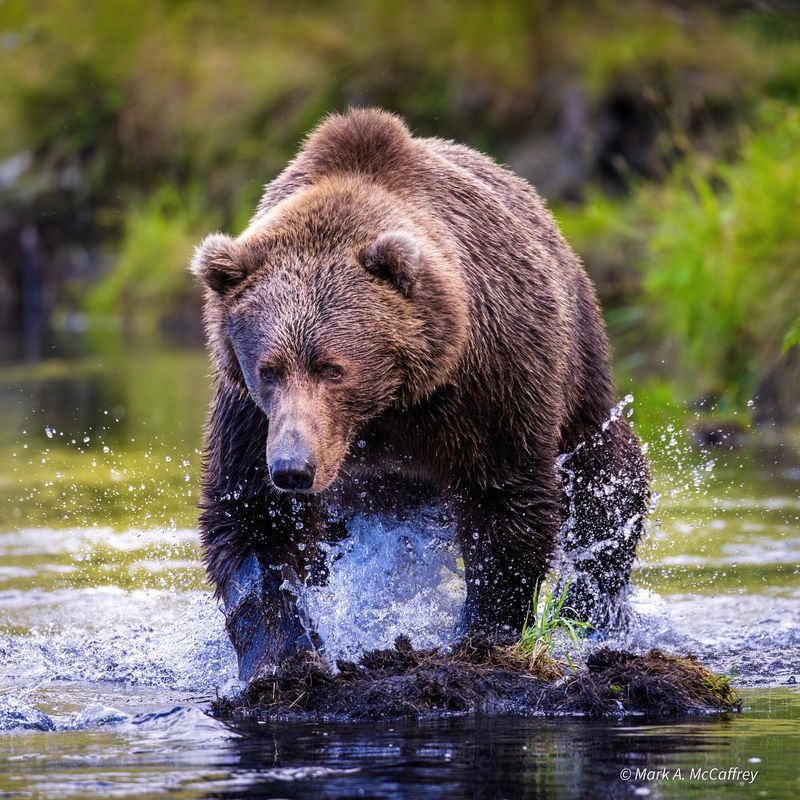
Kodiak Bears are a subspecies of the brown bear, found on Kodiak Island in Alaska. These massive bears can weigh up to 1,500 pounds and stand over 10 feet tall when on their hind legs.
They are omnivorous and spend much of their time fishing for salmon, but they are also formidable predators in their environment.
36. African Lion
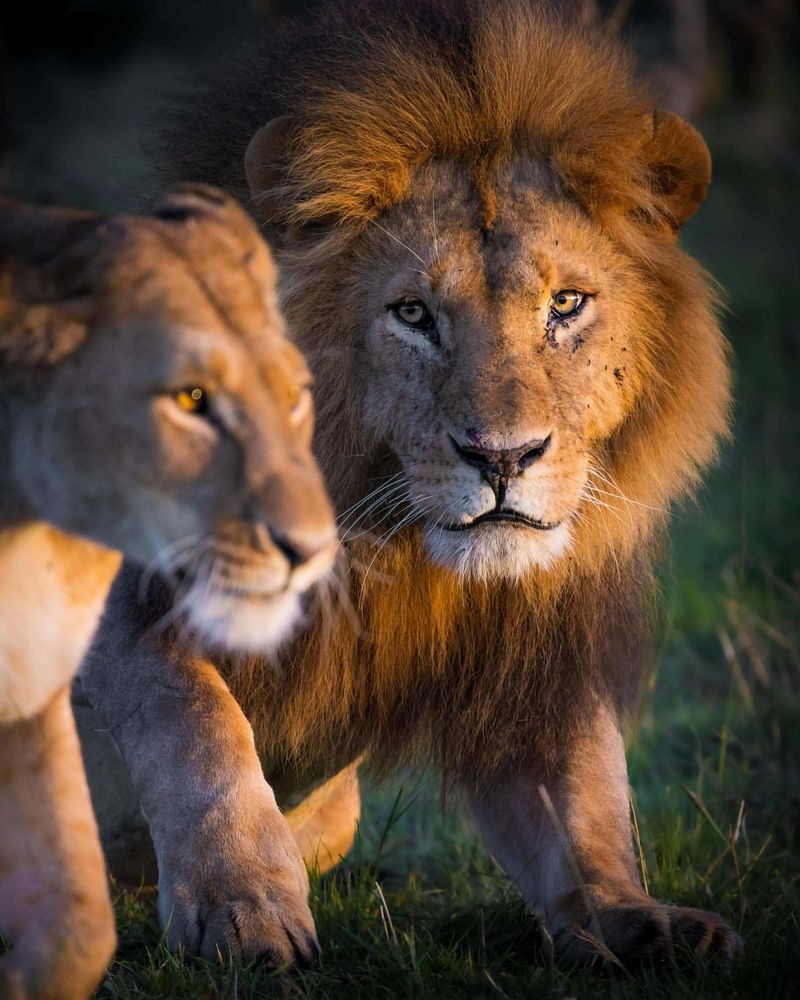
The African Lion is often referred to as the “King of the Jungle” due to its majestic mane and powerful presence.
These social big cats live in prides, where cooperation and teamwork are vital to their hunting strategies. Lions are apex predators, relying on their speed and strength to hunt large herbivores.
37. Giant Squid
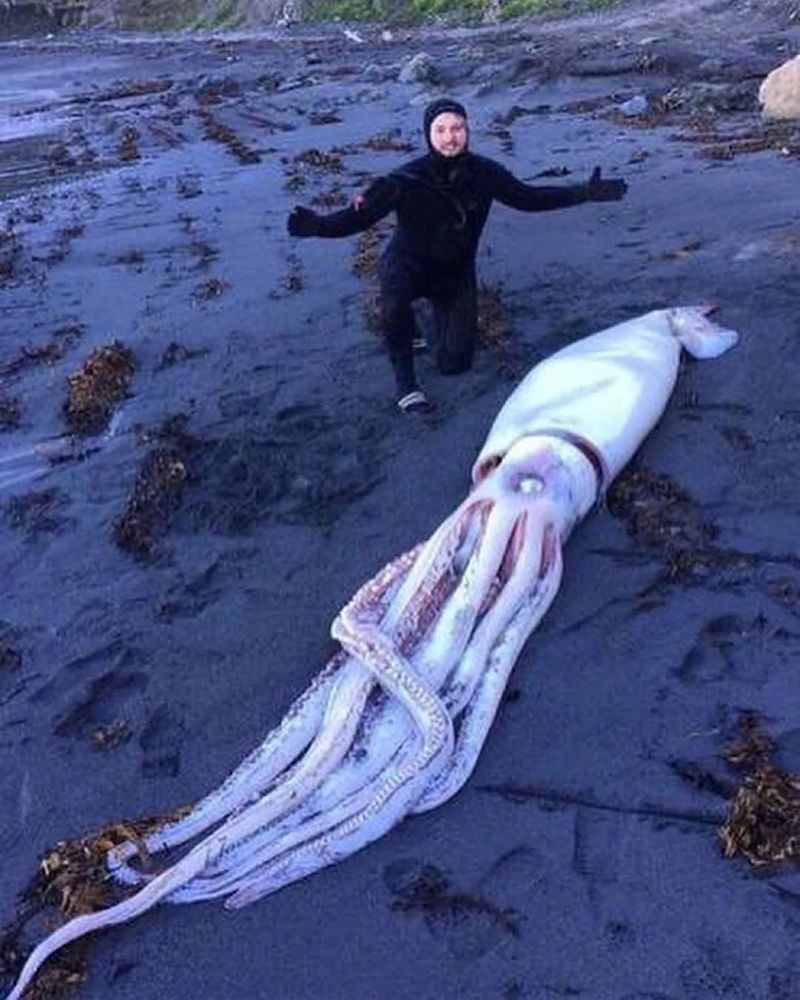
The Giant Squid is an elusive creature that can grow up to 40 feet long. Known for its enormous eyes and tentacles, this deep-sea dweller has long been a subject of fascination and mystery.
Despite its size, the Giant Squid is rarely seen by humans, and much about its behavior remains a mystery.
38. Bald Eagle
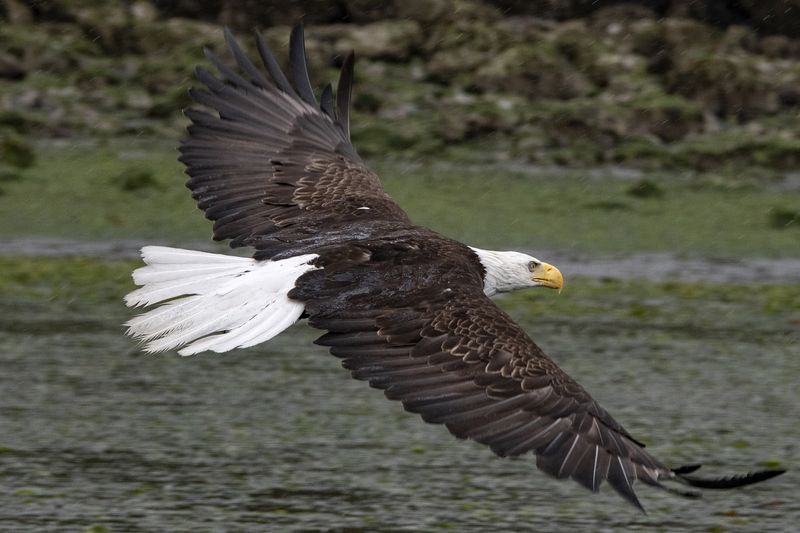
The Bald Eagle is a symbol of strength and freedom in the United States. With a wingspan of up to 7.5 feet, these powerful birds are excellent hunters, preying primarily on fish.
They are found across North America, where they build massive nests in tall trees near bodies of water.

